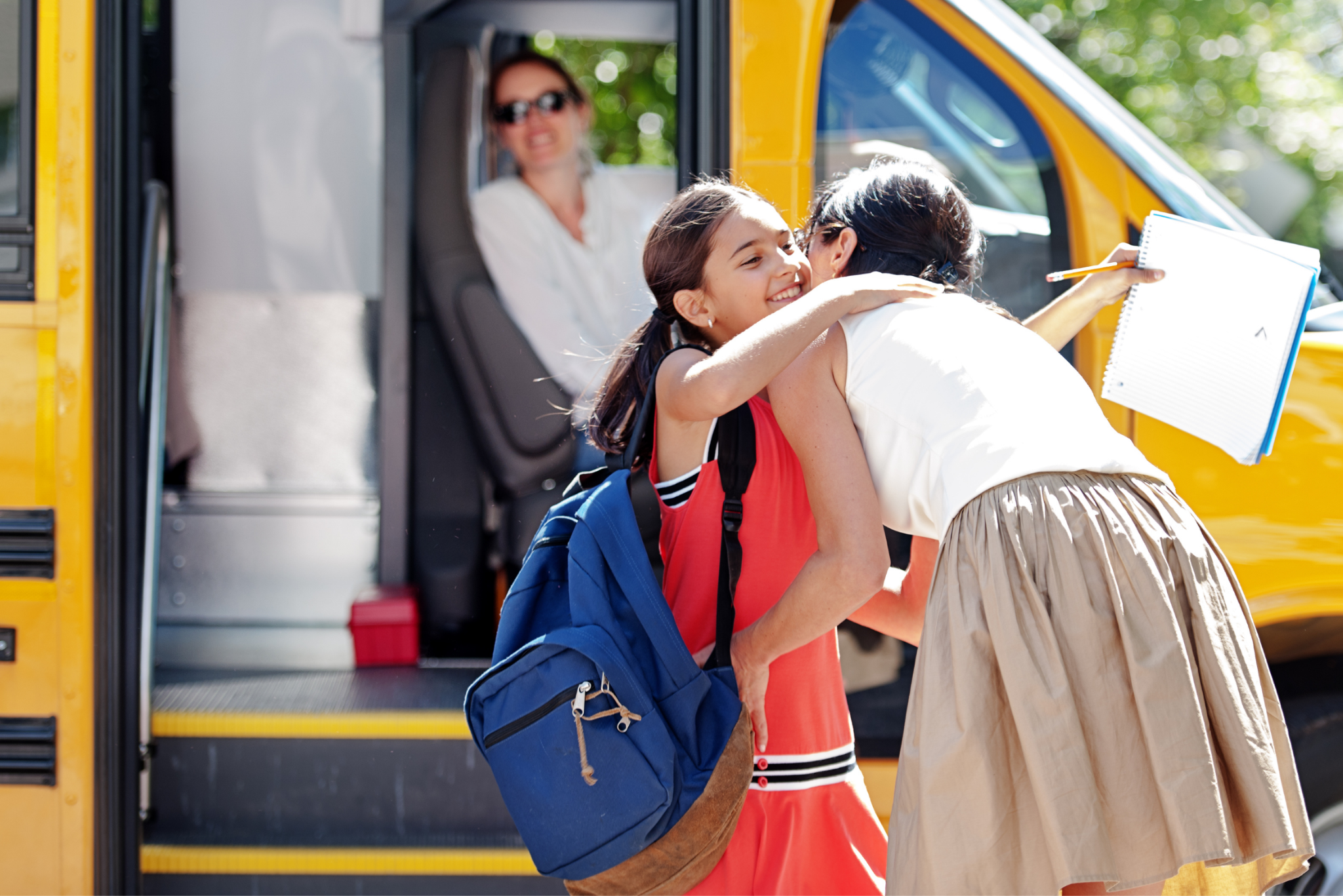Last week I was at Trader Joe’s and bumped into a good friend of mine who said, “My son is going off to college, and I am going to be an emotional mess.” At that moment, I met another friend in the produce section. She stated that her daughter was going to kindergarten, and she, too, felt anxiety about this transition.
Of course, I could empathize with both of them. After all, my daughter Jacqueline was off to college last year. So, I was reminded of my own myriad of sentiments about her transitions throughout the years.
As a clinical mental health counselor intern and friend, I know the importance of listening, being present, and sharing some mindfulness tools for my friends so they would not feel alone. I offered up my ear to listen and an invitation to meet up for coffee or take a walk together to create a space of togetherness and allow for some of these feelings to be processed.
I mean let’s face it, the stress that change causes is daunting for humans. It triggers hormones in the body that can affect our physical, emotional, and psychological well being. One of those big lifestyle changes is still happening right now for many families in Santa Fe, with the first few weeks of school in full swing. This is a time when myriad different emotions can surface for kids, teens, parents, teachers, and guardians alike.
“However, by implementing tools like regulating our emotions, practicing mindfulness, learning good communication skills and creating routines, we can make this emotional bumpy road become more of a smooth ride,” said Katelyn Alvarado, who is a licensed mental health counselor here in Santa Fe and most importantly, mom to a 4-year-old, A.J.
Alvarado shares that the first three weeks of school after summer and holidays can be a time of dysregulation for your child and the whole family. Knowing this is key to navigating our emotions.
“Dysregulation can involve an inability to manage emotions and emotional reactions to stimuli,” Alvarado said. “This can look like kids throwing tantrums, experiencing extreme fatigue, changes in appetite, not wanting to get dressed, and refusing or being hesitant to go to school.”
Moreover, “Dysregulation can be accompanied with different forms of anxiety,” she continues. “Anxiety creates worry, unease, and feelings of nervousness. It can manifest in the form of tummy aches, headaches, crying, rapid heartbeats, difficulties breathing, or panic attacks.”
Alvarado shared that one of the most important ways to tackle some of these emotions is to learn to be open to going with the flow, taking time to listen, and being patient, compassionate, and curious with your children and yourself. If your child is
experiencing some uncomfortable feelings, “You can say things like, ‘It sounds like you are having some big emotions right now and I am here with you,’” she said. “Or, ‘Would you like to tell me how you are feeling? Where in your body are you feeling this?’ Then you can do some breathing or moving together to process those feelings of anxiety through the body.”

Furthermore, learning the art of regulating your emotions can create confidence, healthier relationships, and higher levels of self trust within your kids and yourself. “Emotional regulation is the ability to identify an emotion and manage our internal response to that emotion,” writes Dr. Nicole La Pera, who is a clinical psychologist and “New York Times” bestselling author of How to Do the Work and the creator of the #selfhealersmovement.
Dr. La Pera’s first step toward emotional regulation is to label the sensation in the body. Some examples of this would be, “I feel heat in my chest,” “I feel tingling in my belly,” “I feel my heart racing,” or “I feel a tightness in my throat.”
Next, name the emotion by saying, “I am feeling anxious right now,” “I am feeling not good enough,” or “I am feeling afraid.” Dr. La Pera stresses this is different than saying, “I am anxious,” hence we are labeling it a feeling and not who we are.
Then, breathe to create safety. Slow breathing helps stabilize the nervous system. Finally, utilize some mindfulness and self soothing tools like journaling your feelings, calling someone to support you, sitting with or cuddling a pet, speaking kindly to yourself, taking a warm bubble bath, sitting in the sun, moving your body, or trying an activity that you enjoy to reduce some of these uncomfortable feelings.
Alvarado recommends box breathing, or square breathing, which is a deep breathing technique that can slow down your breathing creating a more calm feeling for kids and adults when anxiety creeps in. To box breathe, begin to breathe in for four counts, hold the breath for four counts, breathe out for four counts, and hold for four counts while visualizing the shape of a box.
She also shares that spending quality time with your kids can create a sense of calm within both of you. “My husband and I both work. As a working mom, I am exhausted when I get home. I have noticed that spending 15 minutes of quality time after school or before bed with A.J. makes a difference in his confidence levels and mood.”
Other mindfulness tools for stay-at-home and working parents are: going on a walk with your child, doing art, listening to music together, reading a book to them, and doing martial arts, yoga, or stretching, as well as planning family outings.
Another important destressor for adults and children is to create a positive affirmation when you are feeling unsure or anxious such as: I am safe, I will get through this, I am enough, I choose to think positive right now, I radiate positive energy, I deserve to be happy, I choose how I will react to this, and so on.
Making sure you and your child are keeping your metabolism stabilized are also key in feeling more calm. Keep a snack in the car or in their lunchbox for when you pick up your child from school or they are riding the bus home. Simply grabbing a small snack of protein and hydrating can keep a person in a more regulated emotional state.
For more structure, set up some rituals with your kids to create consistency and feelings of safety. “One tip I love is creating a goodbye ritual with your child when they are going off to school,” Alvarado continues. “During COVID I could not walk my son into the school, so we created a goodbye that we say every morning. I say, ‘See you later alligator,’ and A.J. says, ‘In a while crocodile.’ You can also decide to say kiss, kiss hug, hug or any type of saying that feels natural for you and your child.” Another way to keep a connection with your child when they are off at school is putting a note, sticker, or small treat in their lunchbox.

More planning can include implementing the school schedule a few weeks before school starts during summer or various holidays throughout the year to get kids acclimated to their new routines. Also, creating bedtime and morning schedules as well as specific times to eat breakfast and dinner are helpful. You can also begin to cut back on screen time for better sleep patterns while creating schedules around using phones.
No matter the child’s age, it can be difficult for them to find the right words to communicate their feelings in difficult situations with other kids. When your child says that a kid is being mean, you guide them with some prompts for a healthy dialogue. Teaching your child to express themselves with statements, like “that hurts my feelings when you…” or “That makes me sad when you…”.
Older kids can use “I” statements, such as: “I feel frustrated when my feelings aren’t heard or acknowledged,” “I feel hurt when I am not included,” or “I feel sad when you share things that were supposed to be private.” You can also coach them to say, “I need some time to think about what you are asking right now before I make a decision.” Or “I would like to be able to do that with you, but I have too much homework this week.”
Using “I” statements can result in a more positive outcome than statements that begin with “You should,” “You always,” or “You are.” By learning these statements, kids can express themselves while allowing space for the other person to hear their needs.
Moreover, Alvarado shares that giving your child prompts by asking questions like “Who is there that you can play with?” “Who is a good friend to you?” “Who are some of the kids that you have fun with and are kind to you?” can build self esteem while allowing them to learn to make healthier choices.
As parents, be curious and ask them questions about their day to connect with them. Being specific is important. For example, you can say, “What made you laugh today?” Or “Tell me the best part of your day.”
In the final analysis, learning self care, how to communicate your needs, and mindfulness tools will not only help you as a parent, it will allow you to role model healthy habits for your children to learn as well. Utilizing these practices can reduce anxiety while strengthening self esteem at any age.
Julia Bell is a freelance writer and clinical mental health counselor intern.



